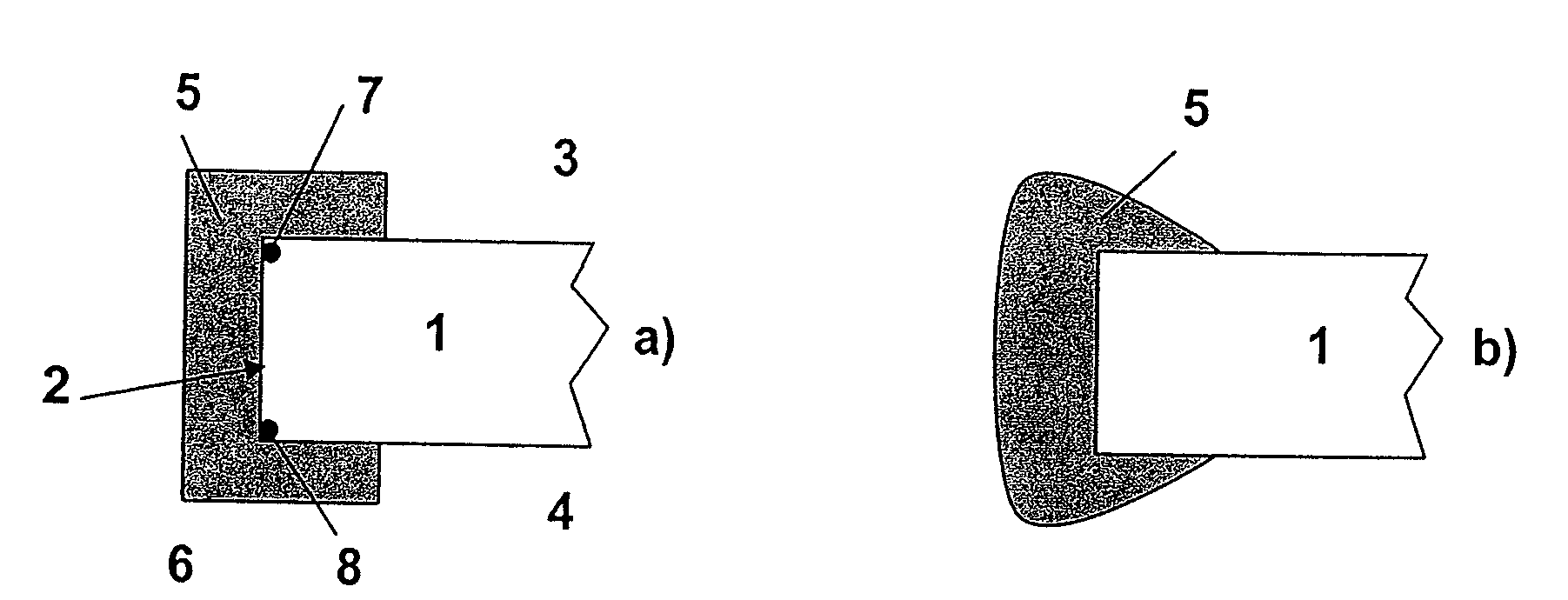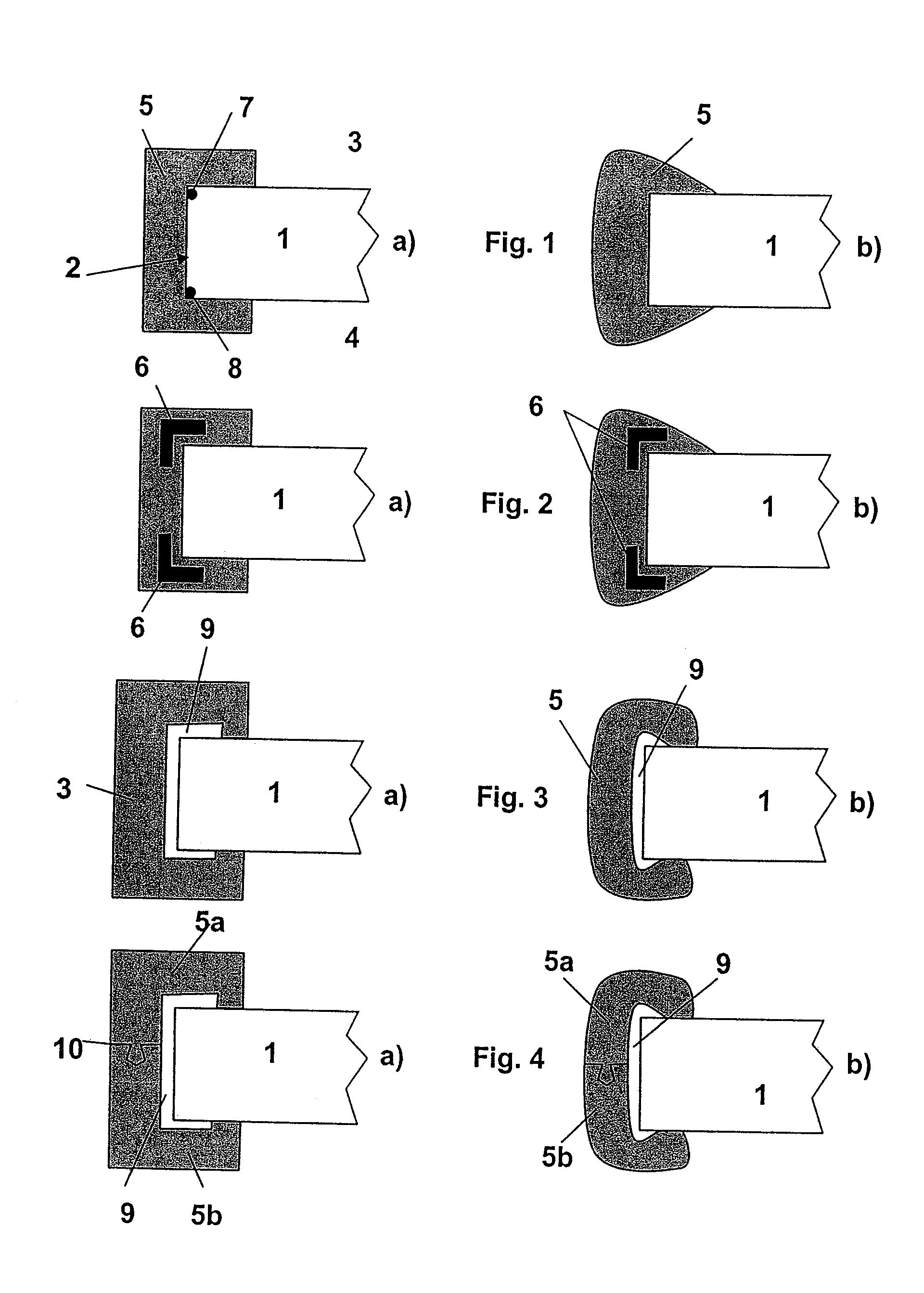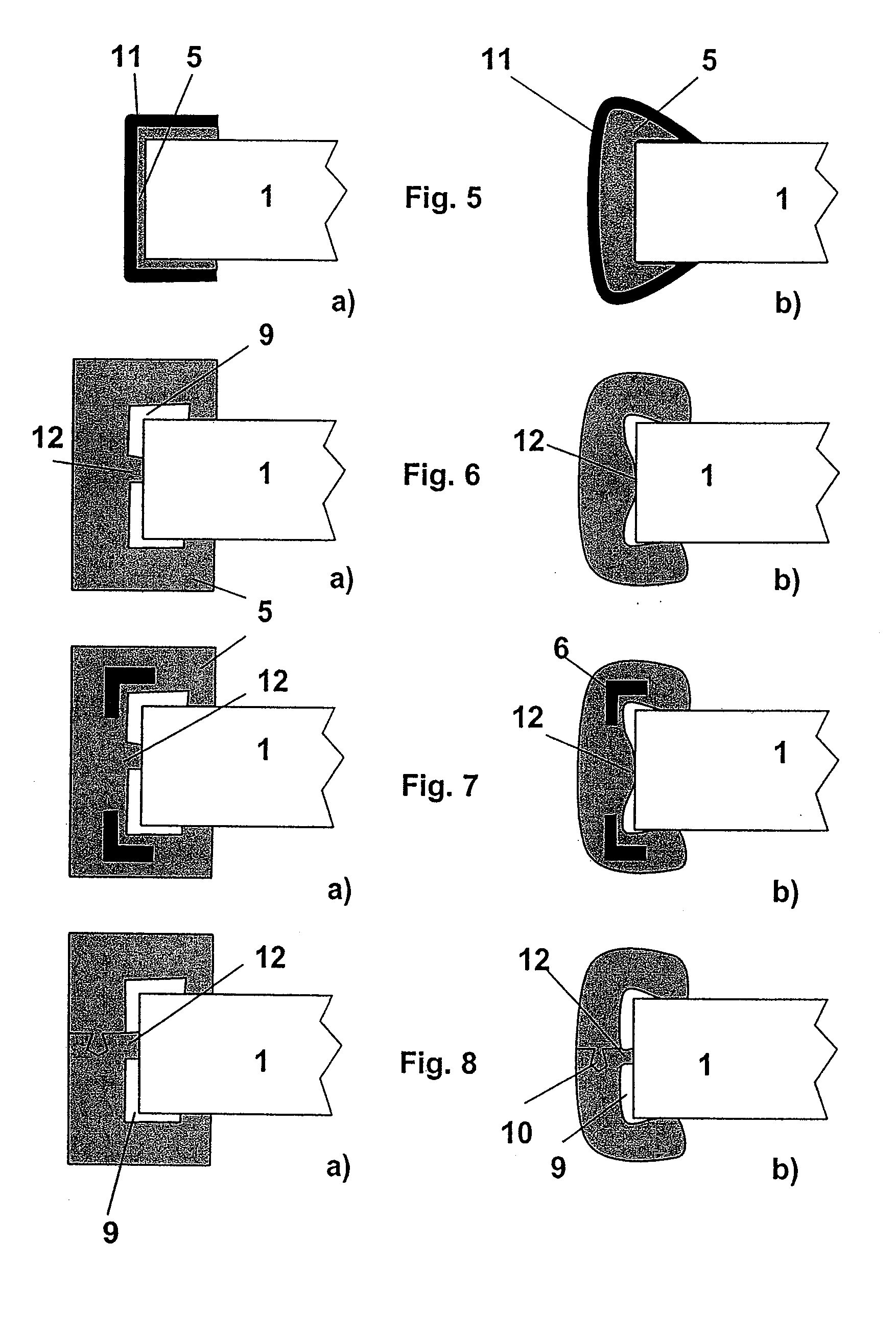Method for Producing a Glass Pane
a glass pane and glass technology, applied in glass severing devices, glass making apparatus, packaging, etc., can solve the problems of poor edge strength, thermally cut edge strength, and decrease the edge strength, so as to reduce the danger of damage, wide application and use confiden
- Summary
- Abstract
- Description
- Claims
- Application Information
AI Technical Summary
Benefits of technology
Problems solved by technology
Method used
Image
Examples
Embodiment Construction
[0030]FIGS. 1a and b each show a typical cross-section through a glass pane 1 in the boundary area, in which it is to be assumed that the edge section has been produced with the aid of a thermal energy introduction. The edge section itself has a front face 2, which typically intersects the opposing glass pane faces 3 and 4 perpendicularly. This assumption applies for all exemplary embodiments shown and may be assumed to be largely realistic, although production-related deviations from an exactly orthogonal orientation of the front face 2 in relation to the adjoining glass pane faces 3 and 4 may occur.
[0031]A sheath 5 enclosing the front face and the boundary areas of the glass pane 3, 4 is shown in FIG. 1a, which adheres directly on the particular glass surface of the edge area. It is to be assumed that the sheath 5 comprises a self-curing plastic material which may be cast, poured, sprayed on, or molded in another suitable way. The embodiment according to FIG. 1a is a perfectly-geo...
PUM
| Property | Measurement | Unit |
|---|---|---|
| thermal energy | aaaaa | aaaaa |
| mechanical tension | aaaaa | aaaaa |
| force | aaaaa | aaaaa |
Abstract
Description
Claims
Application Information
 Login to View More
Login to View More - R&D
- Intellectual Property
- Life Sciences
- Materials
- Tech Scout
- Unparalleled Data Quality
- Higher Quality Content
- 60% Fewer Hallucinations
Browse by: Latest US Patents, China's latest patents, Technical Efficacy Thesaurus, Application Domain, Technology Topic, Popular Technical Reports.
© 2025 PatSnap. All rights reserved.Legal|Privacy policy|Modern Slavery Act Transparency Statement|Sitemap|About US| Contact US: help@patsnap.com



